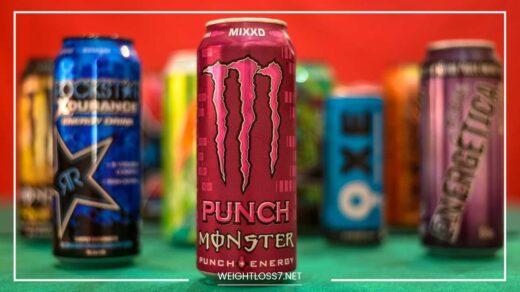How to Lose Lower Belly Fat

Lose Lower Belly Fat
Shedding the Stubborn Stuff: How to Lose Lower Belly Fat
The battle against lower belly fat feels like a universal struggle. It sits there, seemingly unfazed by our efforts, a stubborn reminder of that extra slice of cake or a stressful week.
But take heart, fellow warriors! While spot reduction (losing fat in one specific area) is a myth, there are effective strategies to reduce overall body fat and shrink that lower belly pooch.
In this comprehensive guide, we’ll delve into the science of belly fat, explore healthy habits to combat it, and debunk some common myths. Let’s get started on your journey to a flatter tummy and a healthier you!
Understanding Belly Fat: The Two Types and Their Impact
There are two main types of belly fat, each with its own implications for health:
- Subcutaneous fat: This sits just below the skin and is the jiggly fat you can pinch. While not ideal aesthetically, it’s less of a health concern.
- Visceral fat: This lurks deeper within the abdomen, surrounding organs like the liver and intestines. Visceral fat is linked to a higher risk of chronic diseases like heart disease, type 2 diabetes, even some cancers.
The bad news? We can’t target specific fat loss. The good news? Strategies that reduce overall body fat will address both subcutaneous and visceral fat. This means a slimmer midsection and a healthier you!
Unveiling the Science: How We Burn Fat for a Flatter Belly
Here’s the key to unlocking belly fat reduction: creating a calorie deficit. This means burning more calories than we consume. Our bodies use calories for energy, and when there’s a shortage, they tap into stored fat for fuel.
Exercise and diet play crucial roles in this equation. Exercise helps us burn calories, while a healthy diet ensures we’re not taking in more calories than we burn.
Now, let’s explore some practical ways to achieve this calorie deficit and reduce belly fat.
Diet: Your Ally in the Belly Fat Battle (with Meal Planning Tips)
- Focus on Whole Foods: Fill your plate with a rainbow of fruits, vegetables, whole grains, and lean protein sources. These foods are packed with nutrients and fiber, which keeps you feeling fuller for longer, reducing cravings and mindless snacking.
- Fiber is Your Friend: Fiber slows down digestion, promoting satiety and reducing calorie intake. Aim for 25-35 grams of fiber daily. Load up on fruits (berries, pears), vegetables (broccoli, Brussels sprouts), legumes (beans, lentils), and whole grains (quinoa, brown rice).
- Protein Power: Studies show protein can boost metabolism and increase feelings of fullness. Include lean protein sources like chicken, fish, turkey, beans, lentils, and tofu in your breakfast, lunch, and dinner.
- Healthy Fats are Key: Don’t fear all fats! Healthy fats like those found in avocados, nuts (almonds, walnuts), seeds (chia seeds, flaxseeds), and olive oil can help with satiety and nutrient absorption. Drizzle olive oil on salads, add avocado slices to toast, or enjoy a handful of mixed nuts for a healthy snack.
- Mindful Portions: Pay attention to portion sizes. Use smaller plates to create a feeling of abundance, and avoid distractions while eating to prevent mindless overeating.
- Limit Added Sugars and Refined Carbs: Sugary drinks, processed foods, and refined carbohydrates like white bread and white rice can spike blood sugar levels and lead to increased fat storage. Opt for whole grains, water instead of soda, and limit sugary treats.
- Stay Hydrated: Drinking plenty of water can curb cravings and bloating. Aim for eight glasses of water daily. Consider herbal tea or unsweetened sparkling water for variety.
Meal Planning for Success: Planning your meals ahead of time can be a game-changer. Here are some tips:
- Prep on the Weekends: Dedicate some time on weekends to chopping vegetables, prepping lean proteins, and cooking whole grains in bulk. This makes healthy eating easier throughout the week.
- Pack Your Lunch: Don’t rely on unhealthy cafeteria options. Pack a balanced lunch with lean protein, whole grains, vegetables, and a healthy fat source.
- Plan Healthy Snacks: Keep healthy snacks like fruits, nuts, or yogurt readily available to prevent reaching for unhealthy options when hunger strikes.
Remember: Don’t fall for fad diets or quick fixes. Sustainable, healthy eating habits are key to long-term success.
Exercise: Move Your Body to Shrink Your Belly (Beyond Cardio)
Exercise is a powerful tool for burning calories and reducing belly fat. Aim for at least 150 minutes of moderate-intensity exercise or 75 minutes of vigorous-intensity exercise per week. Here’s a breakdown of effective exercise approaches to target belly fat and improve overall fitness:
- Cardio: Brisk walking, running, swimming, cycling – all excellent ways to burn calories and improve cardiovascular health. Start with activities you enjoy and gradually increase intensity or duration as your fitness level improves.
- Strength Training: Building muscle mass boosts metabolism, helping you burn more calories even at rest. Include exercises that target major muscle groups like legs (squats, lunges), back (rows, pull-ups), chest (push-ups), and core (planks, crunches). Aim for strength training sessions at least twice a week, focusing on proper form to avoid injury.
- HIIT (High-Intensity Interval Training): Short bursts of intense exercise followed by recovery periods can be a great way to burn belly fat efficiently. Consider exercises like jumping jacks, sprints, burpees, or mountain climbers in short intervals with rest periods in between. Start slow and gradually increase intensity as you get fitter.
- Functional Fitness: Exercises that mimic everyday movements can be beneficial. Activities like carrying groceries, gardening, or dancing can improve core strength and stability, contributing to a flatter belly.
Finding Your Exercise Groove: Consistency is key! Here are some tips to make exercise a sustainable part of your life:
- Find activities you enjoy: Explore different exercise options until you find something you genuinely like. You’re more likely to stick with a routine you find fun.
- Schedule Your Workouts: Treat your workouts like important appointments and schedule them in your calendar.
- Mix it Up: Incorporate different exercise types to keep things interesting and prevent plateaus.
- Find a Workout Buddy: Having a workout partner can provide motivation and accountability.
- Start Slow and Progress Gradually: Don’t try to do too much too soon. Begin with manageable goals and gradually increase intensity and duration as you get fitter.
Sleep for a Slimmer Belly: The Rest You Deserve
While often overlooked, sleep plays a crucial role in weight management and belly fat reduction. When we’re sleep-deprived, our bodies produce more ghrelin (the hunger hormone) and less leptin (the satiety hormone), leading to increased cravings and potential overeating. Aim for 7-8 hours of quality sleep each night.
Here are some tips for better sleep:
- Establish a Sleep Schedule: Go to bed and wake up at consistent times, even on weekends.
- Create a Relaxing Bedtime Routine: Wind down before bed with calming activities like reading, taking a warm bath, or light stretching.
- Optimize Your Sleep Environment: Ensure your bedroom is dark, quiet, and cool for optimal sleep quality.
- Limit Screen Time Before Bed: The blue light emitted from electronic devices can disrupt sleep patterns. Avoid screens for at least an hour before bedtime.
Stress Management: Taming the Belly Fat Trigger
Chronic stress can wreak havoc on our health, including promoting belly fat storage. When stressed, our bodies produce cortisol, a stress hormone that encourages fat storage, particularly around the abdomen. Here are some stress management techniques to help:
- Mindfulness and Meditation: Taking a few minutes each day for mindfulness meditation or deep breathing exercises can help reduce stress and improve overall well-being.
- Yoga: Yoga combines physical postures, breathing exercises, and meditation, promoting relaxation and stress reduction.
- Exercise as a Stress Buster: Physical activity is a great way to manage stress. A brisk walk, some yoga poses, or a dance session can all help to melt away tension.
- Relaxation Techniques: Explore relaxation techniques like progressive muscle relaxation or guided imagery to manage stress and promote better sleep.
Building a Sustainable Lifestyle for Lasting Results
Remember, lasting change takes time and effort. Here are some tips to build a sustainable lifestyle that keeps belly fat at bay:
- Set SMART Goals: Specific, Measurable, Achievable, Relevant, and Time-bound goals will help you stay motivated and track your progress.
- Find Your Support System: Surround yourself with positive and supportive people who encourage your healthy lifestyle choices.
- Celebrate Non-Scale Victories: Don’t just focus on the number on the scale. Celebrate improvements in energy levels, mood, and clothing size.
- Make Healthy Habits Fun: Find ways to make healthy habits enjoyable. Explore new recipes, try different workout routines, or find an exercise buddy with similar goals.
- Forgive Yourself and Get Back on Track: Everyone has setbacks. Don’t beat yourself up if you indulge occasionally. Just get back on track with your healthy habits the next day.
Remember, you are not alone in this journey! Millions of people are striving for a healthier lifestyle and a flatter belly. By incorporating these evidence-based strategies and building a sustainable lifestyle, you can achieve lasting results and feel your best. Here are some additional points to consider for a well-rounded approach:
Food Sensitivities and Gut Health: Consider consulting a healthcare professional to identify any potential food sensitivities that may be contributing to belly fat storage or digestive issues. Maintaining a healthy gut microbiome through a balanced diet rich in prebiotics and probiotics can also be beneficial for overall health and weight management.
Strength Training Beyond Core: While core exercises like crunches and planks are important, don’t neglect strength training for other muscle groups. Building muscle mass throughout your body increases your metabolic rate, helping you burn more calories even at rest.
Cook More at Home: Cooking at home allows you to control ingredients and portion sizes. Experiment with healthy recipes that are delicious and satisfying.
Listen to Your Body: Pay attention to your body’s hunger and fullness cues. Eat until you’re comfortably satisfied, not stuffed.
Mindful Eating: Practice mindful eating by slowing down, savoring your food, and avoiding distractions while eating. This can help you feel more satisfied with smaller portions.
Manage Portions When Eating Out: Eating out can be challenging. Be mindful of portion sizes and choose healthier options like grilled chicken or fish with steamed vegetables.
Consider Strength Training Classes: If you’re new to strength training, consider joining a group fitness class or working with a personal trainer to learn proper form and technique.
Beware of Hidden Sugars: Read food labels carefully to identify hidden sugars in processed foods. Opt for whole foods and limit sugary drinks.
Stay Hydrated Throughout the Day: Carry a reusable water bottle and sip water regularly throughout the day. Dehydration can sometimes be mistaken for hunger.
Track Your Progress (Optional): While not essential for everyone, keeping a food journal or using a fitness tracker can help you stay accountable and track your progress over time.
Be Patient and Consistent: Losing belly fat and achieving a healthy weight takes time and dedication. Don’t get discouraged if you don’t see results overnight. Stay consistent with your healthy habits and celebrate your progress along the way.
By incorporating these tips and strategies, you can transform your approach to belly fat reduction and build a healthy lifestyle that promotes long-term success.
Remember, the journey to a flatter tummy is about feeling your best, not just achieving a certain size. Embrace the process, celebrate your victories, and enjoy the positive changes you’ll experience along the way!

















